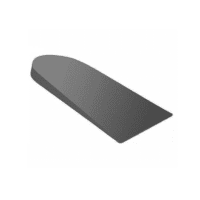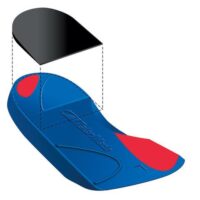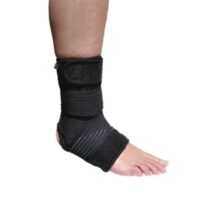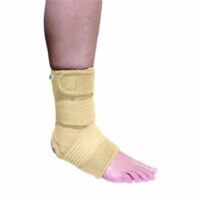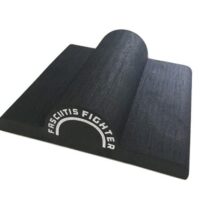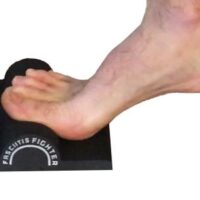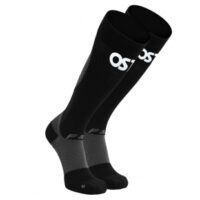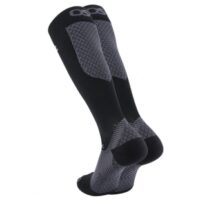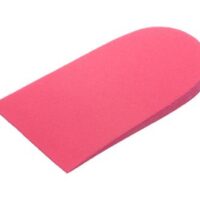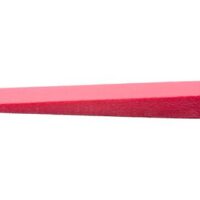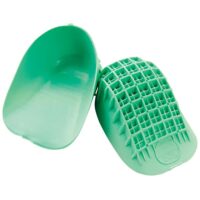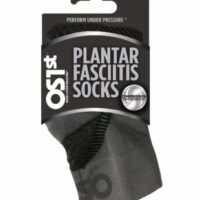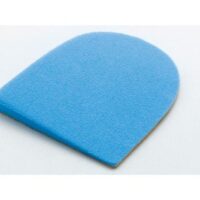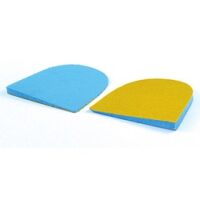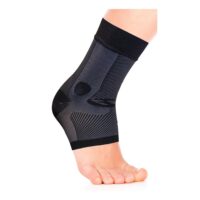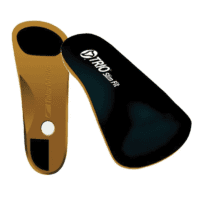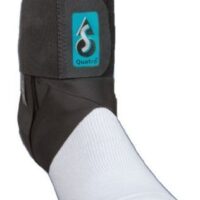
Sever’s Disease
A Guide for Parents and Caregivers
Sever’s disease, also known as calcaneal apophysitis, is a prevalent cause of heel pain in active children, particularly during their growth spurts. This guide, informed by physiotherapy knowledge, aims to provide comprehensive insights into Sever’s disease, including its causes, symptoms, and effective management strategies.
We’ll also discuss the latest research and provide practical advice for parents and caregivers. Remember, for personalised advice, always consult a professional physiotherapist.
What is Sever’s Disease?
Sever’s disease arises from excessive forces injuring the heel’s growth plate during early adolescence. It’s most common in physically active children undergoing rapid growth phases.
Age of Occurrence
- Girls: Typically between 8 to 10 years of age.
- Boys: Commonly between 10 to 12 years of age.
Causes and Risk Factors
Sever’s disease results from repetitive stress to the growing heel bone, often due to activities like running and jumping. Key risk factors include:
- High activity levels
- Running on hard surfaces
- Rapid growth phases
- Inappropriate or worn-out footwear
- Lower leg muscle weakness
- Obesity
- Poor biomechanics
Sever’s Symptoms
Parents may notice their child:
- Limping or walking awkwardly
- Experiencing pain when rising onto tiptoes
- Complaining of heel pain, which could affect one or both heels
Diagnosis and Biomechanical Considerations
A physiotherapist can diagnose Sever’s disease through history and clinical tests, such as the “squeeze test”. Factors contributing to the condition include:
- Limited ankle dorsiflexion
- Abnormal hindfoot motion (overpronation or supination)
- Tight calf muscles
- Excessive weight-bearing activities
Duration and Long-term Effects
- Duration: Typically, two weeks to a few months, varying with activity levels and growth rates.
- Long-term Effects: If poorly managed, it can lead to permanent bone deformity at the heel, shoe-fitting difficulties, foot arch problems, and tight calf muscles.
Managing Sports Participation
Participation in sports depends on the severity of pain. Physiotherapists often recommend reducing or modifying activities to facilitate faster recovery.

Comprehensive Treatment Approach
Phase 1: Early Injury Protection
- Rest, ice, and protect the heel
- Use of pain relief methods like paracetamol (consult a doctor)
- Shock-absorbing heel cups or soft orthotics
Phase 2: Regaining Range of Motion
Phase 3: Restoring Foot Arch Muscle Control
- Strengthening foot arch muscles to support the plantar fascia
Phase 4: Leg Muscle Control
- Enhancing overall leg muscle function
Phase 5: Correcting Foot Biomechanics
- Biomechanical assessment and potentially using orthotics
Phase 6: Enhancing Running and Landing Techniques
- Technique correction to prevent recurrence
Phase 7: Footwear Analysis
- Choosing appropriate footwear to reduce injury risk
Orthotics and Heel Cups
- Used for temporary or long-term biomechanical correction
- Helpful during the acute phase to alleviate symptoms
- Read more: Heel Cups
Preventive Measures
- Ensuring good joint and muscle flexibility
- Monitoring and adjusting weight-bearing activities
- Addressing foot arch issues
Listening to Your Child
- Take heel pain in children aged 8 to 12 seriously
- Seek professional advice for accurate diagnosis and management
Conclusion
Sever’s disease, while temporary, requires careful management to prevent long-term complications. Early intervention, guided by a physiotherapist, can ensure a swift and effective recovery. Stay vigilant to your child’s symptoms and consult a healthcare professional for tailored advice and treatment.
Seek Professional Advice
For specific concerns or symptoms, it’s crucial to consult a physiotherapist. They can provide individualised care and guide you through the recovery process. Remember, the information provided here is general and should not replace professional advice.
Rochedale - Call 38410277
Book Online: RochedaleSalisbury - Call 32751044
Book Online: SalisburySandgate - Call 32691122
Book Online: SandgateCommon Heel Pain Causes
What's Causing Your Heel Pain?
This article digs into various heel pain and injury conditions that often trouble individuals. From the well-known discomfort of plantar fasciitis to the presence of heel spurs, we'll navigate through prevalent issues that impact our mobility.
Alongside discussions about frequently asked questions and recommended products, our exploration extends to traumatic ankle ligament injuries, tendon problems, foot injuries, bone fractures, degenerative conditions, biomechanical issues, nerve-related sources, muscle injuries, and systemic conditions. This comprehensive guide aims to provide clarity and understanding for those dealing with ankle and foot discomfort.


Heel Pain
FAQs & Products
Traumatic Ankle Ligament Injuries
Tendon Injuries
- Achilles Tendon Rupture
- Achilles Tendinopathy
- FHL Tendinopathy
- Peroneal Tendinopathy
- Tibialis Posterior Tendinopathy
Foot Injuries
Bone Injuries
- Ankle Fracture (Broken Ankle)
- Stress Fracture
- Stress Fracture Feet
- Severs Disease
- Heel Spur
- Shin Splints








